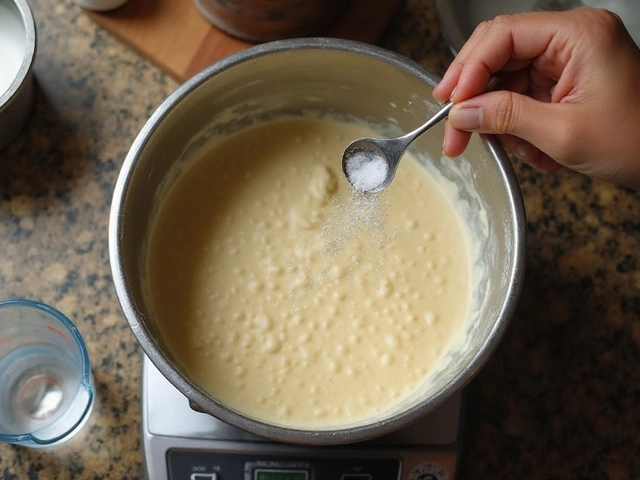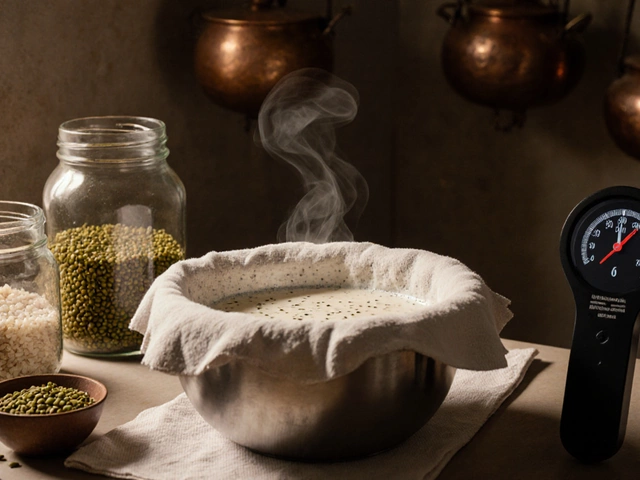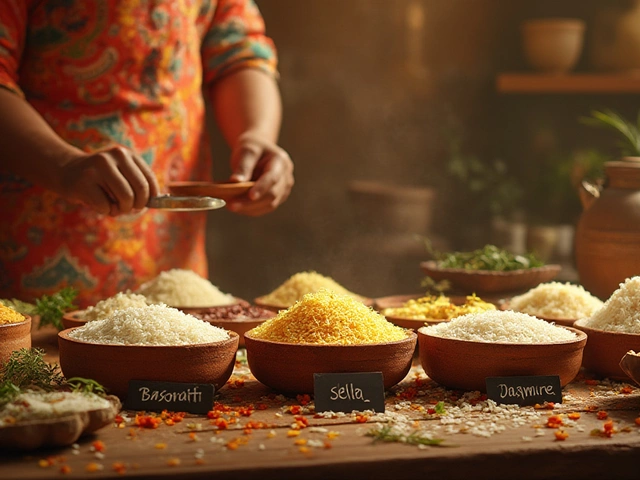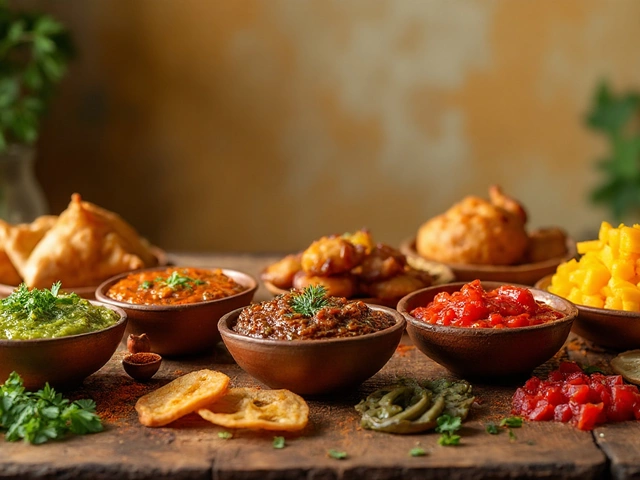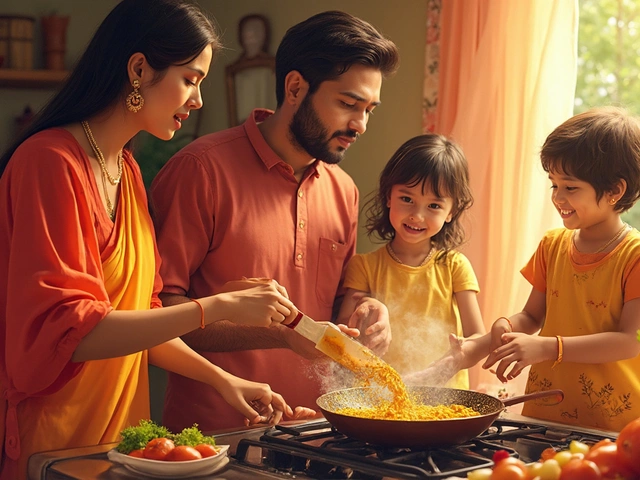Ever wondered if dosas are actually good for you, or if you're just enjoying a tasty breakfast while ignoring the calorie count? People argue both sides. Some say dosas are pure health because they're made from rice and lentils, but others worry about carbs, oil, and portion sizes.
Let’s get real—what you put in your dosa batter and how you cook it makes a huge difference. The basics are usually simple: rice, urad dal (a kind of lentil), maybe a bit of fenugreek. That’s it. No added sugar, no random junk. And when you let that batter ferment, things get interesting. The bacteria break things down, making the dosa easier to digest and packing it with a little natural goodness you won’t get from instant mixes.
If you usually pour on the oil or eat your dosa stuffed with heaps of potato, you might want to pay attention. The way you serve and tweak your dosa is where it can go from "pretty healthy" to "definitely not great" for you. And hey, if you’re looking to make your dosa batter even better, tiny changes—like adding more lentils or using less rice—can pump up the protein and cut the carb spike.
- What’s in a Dosa? The Basics
- How Fermentation Changes Things
- Calories, Carbs, and What They Mean for You
- Easy Tweaks for a Healthier Dosa
- When Is Dosa Not So Good for You?
What’s in a Dosa? The Basics
If you break down the classic dosa, the ingredient list is surprisingly short. The base is just rice and urad dal, which is a type of split black lentil. People often throw in a few fenugreek seeds too. These aren’t there for taste. They help the fermentation and can make the batter a little fluffier. You soak everything for several hours—usually overnight—until the grains get soft enough to blend smoothly.
Then it’s all about the blend: grind the soaked rice and dal separately, mix them together, and add just enough water for a batter that’s thick but pourable. What happens next is the magic—letting that batter sit so it ferments. If you live somewhere warm, this can take 8-12 hours. The fermentation process makes all the difference because it breaks down complex stuff in the dal and rice, helping your body handle them better.
No baking powder, no eggs, no fancy stuff. A "dosa" only needs these basics, so there’s nothing in there that’ll throw off someone looking for a clean, plant-based breakfast. You don’t need any weird additives to get the real thing—just patience and the right ratio of rice to dal, usually around 3:1, though some people tweak this to boost the protein a bit.
So, if you’re making dosa batter at home, don’t overthink it. Just grab rice, urad dal, water, salt, and some fenugreek seeds if you want. The fewer the ingredients, the easier it is to control what goes into your body and keep things healthy right from the start.
How Fermentation Changes Things
Fermentation is where dosa gets its edge over other breakfasts. When you mix rice and urad dal, then leave the batter out overnight, you’re letting friendly bacteria do their job. They break down carbs and proteins, making the dosa lighter, fluffier, and easier on your gut.
This isn’t just about taste. The fermentation process helps boost your nutrition in a few cool ways:
- B vitamins get a natural bump, especially B12 and folic acid, because bacteria produce them as they multiply.
- The glycemic index drops a notch, so the carbs in your dosa don’t spike your blood sugar as quickly as plain rice would.
- Lactic acid (the stuff that gives the batter a mild tang) helps some minerals—like iron and zinc—get absorbed better by your body.
Here’s a quick data snapshot so you can see what changes with fermentation:
| Unfermented Batter | Fermented Batter | |
|---|---|---|
| Digestibility | Average | Much improved |
| Vitamin B12 | Low | Noticeably higher |
| Glycemic Index | Higher | Lower |
| Iron Absorption | Lower | Higher |
One thing, though—you’ve got to give it time. The longer you let your dosa batter ferment (usually at least 8 hours at a warm room temp), the more of these benefits you get. If your kitchen is chilly, it could take longer, so keep that in mind.
By the way, instant mixes or shortcuts can skip or cut short fermentation, which really cuts down on those nutritional perks. If this is about health, real fermentation is non-negotiable.

Calories, Carbs, and What They Mean for You
If you want to really know if dosa fits into your daily eating plan, you’ve got to look at the numbers. A standard plain dosa (cooked with very little oil, about 80g - the size of one big, thin restaurant dosa) has roughly 120-150 calories. Most of these calories come from carbs. That’s not shocking, since rice is the main ingredient.
If you’re watching your carbs—whether it’s for weight loss, diabetes, or just general health—a dosa isn’t as low-carb as an omelette, but it’s not crazy either. Here’s a basic breakdown for a typical homemade dosa (80g):
| Nutrient | Amount (per dosa, approx.) |
|---|---|
| Calories | 120-150 kcal |
| Total Carbs | 25-30g |
| Protein | 3-4g |
| Fat | 2-4g |
| Fiber | 1g |
The numbers can swing higher if you use extra oil, serve it masala-style (stuffed with potatoes), or make those little bite-sized dosas. Eat two or three dosas and the carb load climbs fast—cue the sleepy feeling afterward if you don’t balance it out with some protein or fiber.
What about glycemic index? Regular dosa made mostly with white rice can give you a quick energy boost but also a quick drop—meaning it’s not great for blood sugar if eaten alone. If you’re trying to keep things steady, pair your dosa with protein-rich chutneys (think coconut or peanut) or fill it with something like paneer instead of potatoes.
- If you want a lighter dosa, cut down the rice and bump up the lentils. Even adding a spoonful of oats or quinoa shifts the nutrition for the better.
- Watch the oil in the pan. Dosa only needs a thin swipe—too much adds empty calories fast.
- For folks managing diabetes, whole grain dosa (using brown rice or mixed grains) makes a big difference in how your body handles the carbs.
If you’re eating dosa once in a while as part of a balanced breakfast—along with dal, chutney, or veggies—it’s not going to ruin your diet. But if you’re doubling up and dipping in ghee, just be aware those calories and carbs add up quick.
So, is dosa healthy or unhealthy? Use the numbers as a guide, but it really boils down to what’s in your dosa batter and what lands on your plate.
Easy Tweaks for a Healthier Dosa
If you’re looking to make your dosa a bit healthier without losing flavor, you’ve got plenty of options. Start with the batter—the heart of any dosa recipe. Most people use a plain rice and urad dal mix, but swapping out some rice for extra lentils (like moong dal or chana dal) can give your dosas more protein, fiber, and those filling vibes that keep you going.
- Add more dal: For every cup of rice, try using at least three-fourths of a cup of lentils. It balances the macros and makes your dosa crispier, too.
- Go brown or red: Switch white rice with brown rice, red rice, or even millet grains. This swap ups the fiber and keeps blood sugar jumps in check.
- Veggie boost: Toss in grated veggies like carrots, beets, or spinach right into the batter. Not only do they add color, but you also get more vitamins without any extra hassle.
- Fermentation time: Longer fermentation (8–12 hours) increases probiotics, making your dosa easier to digest and giving your gut some TLC.
- Less oil: Use a nonstick pan, so you need barely any oil when cooking. You trim down the calories without sacrificing taste.
Want proof that these changes matter? The table below lays out the nutritional punch in a regular versus tweaked dosa:
| Type | Calories (per 100g) | Total Protein | Fiber | Glycemic Index |
|---|---|---|---|---|
| Standard Rice-Urad Dosa | 180 | 5g | 1g | High |
| Mixed Dal Dosa | 160 | 8g | 3g | Moderate |
| Millet & Veggie Dosa | 150 | 7g | 4g | Low |
Dr. Shweta Joshi, a well-known dietitian in Bangalore, puts it simply:
“Even small tweaks like using more dal or whole grains in your dosa can make a big difference for blood sugar and satiety. It’s one of the easiest ways to turn a comfort food into an everyday healthy option.”
So if you love dosa but worry about carbs or calories, you don’t have to ditch it. Just change up the basics and your dosa goes from a guilty pleasure to a daily staple you can truly feel good about.
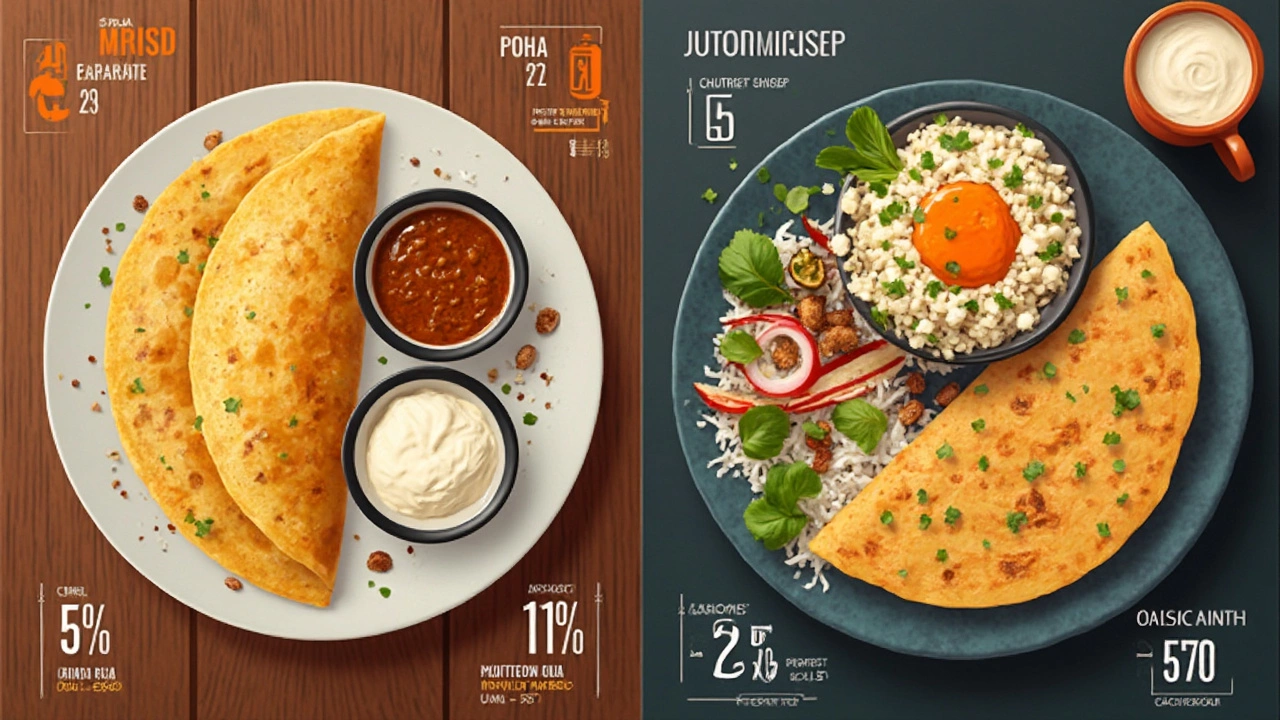
When Is Dosa Not So Good for You?
It’s easy to assume dosa is always a healthy choice, but that’s not the full story. The way you prep, cook, and serve your dosa can change things a lot. If you’re eating out, pay attention—restaurant and street-style dosas often use a ton of oil or butter. They get that perfect crispy finish by adding way more fat than you’d use at home. Suddenly, a light breakfast is loaded with extra calories and saturated fat.
If you usually fill your dosa with big scoops of potato masala, that’s another thing to consider. Classic aloo masala is tasty, but it’s mostly carbs and can pile on the calories fast, especially if you add more ghee or serve it with coconut chutney, which is high in fat too.
The basic batter isn’t gluten-free either, so if you try to avoid gluten for health reasons, check the recipe. Some instant or store-bought batters even sneak in extra ingredients—like preservatives or added starch—which don’t help your health. Read those labels if you’re buying ready-made.
Another point that’s often missed: portion size. Two small dosas can fit into a balanced meal. Five extra-large restaurant dosas? Not so much. Dosa can spike your blood sugar pretty quickly if you eat it in big quantities, especially if you don’t pair it with enough protein or fiber on the side.
- Lots of oil or butter during cooking
- Heavy, high-carb fillings like potato masala
- Too many dosas in one sitting
- Buying pre-made batter that’s full of additives
- Skipping protein- or fiber-rich side dishes
If you’re diabetic, watching your weight, or trying to control cholesterol, it literally pays to check what’s going into and onto your dosa. The homemade version, with less oil and simple sides like sambar or spiced veggies, is usually the safest bet. And if you ever wonder why you feel sluggish after restaurant dosas, it’s probably the fat and portion size to thank.
- Poplular Tags
- dosa
- dosa batter recipe
- healthy dosa
- Indian breakfast
- fermented foods







